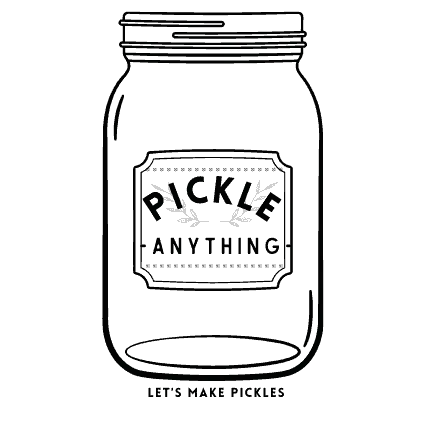Pickling is a popular method of food preservation that has been practiced for centuries.
It is a process that involves soaking fruits or vegetables in brine or vinegar, which helps to preserve their flavor and texture.
However, when pickling at home, it is important to follow safety guidelines to avoid spoilage and ensure that the pickles are safe to eat.

Understanding Pickling Spoilage
Pickled products are subject to spoilage from microorganisms, particularly yeasts and molds, as well as enzymes that may affect flavor, color, and texture.
These microorganisms can grow in the brine solution if it is not acidic enough or if the temperature of the solution is too high.
Enzymes can also affect pickled products. For example, enzymes in cucumbers can cause them to soften and become mushy over time.
To avoid spoilage when pickling at home, it is important to understand how these factors can contribute to spoilage and take steps to prevent it.
Choosing the Right Fruits and Vegetables
To make sure your pickles turn out perfectly every time, it is important to start with fresh produce that has not started to spoil.
Look for fruits or vegetables that are firm and free of bruises or blemishes.
When making cucumber pickles specifically, it’s best to choose a variety specifically grown for pickling rather than a table variety meant for eating fresh out of hand.
This will help ensure you get the best quality pickle possible.
Proper Measurement and Proportions
When making homemade pickles it’s essential you measure your ingredients carefully using weighed measurements rather than cups as this will help you achieve accurate proportions which determines the final outcome; flavour & safety included!
The proportion of fresh food (fruits or veggies) compared with other ingredients (salt/sugar/vinegar etc.) will have an effect on both taste & safety so accuracy here is key!
Safe Heating Methods
When heating pickling liquids, it is recommended to use unchipped enamelware, stainless steel, aluminum, or glass. If using a chipped pot or pan it can harbor bacteria that could be harmful to your pickles.
Temperature control also plays a role in ensuring safe pickling.
The ideal temperature range for pickling is between 180-200°F (82-93°C).
If the temperature of the solution falls outside this range, it can promote the growth of harmful bacteria and spoilage.
Checking Jars and Cans for Safety
It’s essential you inspect jars and cans prior to pickling! Eating produce from a can or jar that is damaged can lead to botulism poisoning which could be fatal so always be sure your containers are free from damage before using them.
Look out for signs of damage such as leaks, bulges, or cracks in the jar/can which indicate that something has gone wrong during storage.
Following USDA Recommendations
The USDA’s Complete Guide to Home Canning provides comprehensive guidance on food preservation and explains how to safely pickle fruits & vegetables while avoiding spoilage & other harmful outcomes.
The guide includes details regarding everything from equipment/utensils needed through to acidity levels necessary safe sterilisation methods & more!
It’s important that you follow these guidelines when making homemade pickles as they have been developed by experts with decades of experience in both commercial processing & home preservation alike.
Final Thoughts
Pickling at home is an excellent way to preserve fruits and vegetables while enjoying flavorful recipes throughout the seasons if done properly/safely!
To avoid spoilage when pickling at home follow these aforementioned guidelines: use fresh produce-that’s free from spoilage; choose cucumbers specifically grown for making homemade dill/mustard/other varieties sold whether whole or sliced; measure carefully using weighed amounts/accurate proportions & be mindful of the temperature/cookware used when heating pickling liquids.
Lastly, always inspect your jars and cans for damage before consuming!
If you follow these guidelines you’ll reduce the risk of spoilage or other unwanted outcomes in your homemade pickles while increasing overall food safety for everyone who enjoys them!
